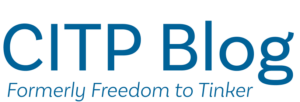Category: Uncategorized
-
A (True) Story for Grokster Eve
Recently I met a promising young computer scientist, whose name I will withhold for reasons that will soon be evident. He has developed a very interesting network software system that would be useful for a great many legitimate applications. I was impressed by his system and wondered why I hadn’t heard of it before. The…
-
Coming: Mobile Phone Viruses
Clive Thompson at Slate has a scary-sounding new piece about cellphone viruses. As phones get smart – as they start running general-purpose operating systems and having complex software interfaces – they will tend to develop the kinds of software bugs that viruses can exploit. And as phones become more capable, virus-infected phones will be able…
-
Apple Closes iTunes Store "Security Hole"
Last week, DVD-Jon and two colleagues released PyMusique, a tool for buying songs from Apple’s iTunes Music Store (iTMS) site. This got some people upset, because songs bought with PyMusique were not encumbered by any copy protection. Now Apple, predictably, has updated iTMS to make it incompatible with PyMusique. The standard narrative about this goes…
-
Cornell Researchers on P2P Quality Control
Kevin Walsh and Emin Gün Sirer, of Cornell University, have a new paper on Credence, a system for detecting unwanted files in P2P networks. It’s a kind of reputation system for files, designed to detect in advance that certain files are not what they claim to be. One use of this technology is to detect…
-
Godwin's Law, Updated
One of the most famous observations about online discussions is Godwin’s Law: As an online discussion grows longer, the probability of a comparison involving Nazis or Hitler approaches one. When it comes to copyright policy, a related law seems to hold: As a copyright policy discussion grows longer, the probability of pornography being invoked approaches…
-
Pharm Policy
I wrote Monday about pharming attacks, in which a villain corrupts the DNS system, which translates textual names (like “www.freedom-to-tinker.com”) into the IP addresses (like “216.157.129.231”) that are used to route traffic on the Internet. By doing this, the villain can impersonate an Internet site convincingly. Today I want to talk about how to address…
-
Unwanted Calls and Spam on VoIP
Fred Cohen is predicting that VoIP will bring with it a flood of unsolicited commercial phone calls. (VoIP, or “Voice over Internet Protocol,” systems deliver telephone-like service, making connections via the Internet rather than using the wires of the plain old telephone system.) Cohen argues that VoIP will drive down the cost of international calling…
-
Pharming
Internet spoofing attacks have been getting more and more sophisticated. The latest evil trick is “Pharming,” which relies on DNS poisoning (explanation below) to trick users about which site they are viewing. Today I’ll explain what pharming is. I’ll talk about fixes later in the week. Spoofing attacks, in general, try to get a user…
-
Harvard Business School Boots 119 Applicants for "Hacking" Into Admissions Site
Harvard Business School (HBS) has rejected 119 applicants who allegedly “hacked” in to a third-party site to learn whether HBS had admitted them. An AP story, by Jay Lindsay, has the details. HBS interacts with applicants via a third-party site called ApplyYourself. Harvard had planned to notify applicants whether they had been admitted, on March…
-
Cal-Induce Bill Morphs Into Filtering Mandate
A bill in the California state senate (SB 96), previously dubbed the “Cal-Induce Act,” has now morphed via amendment into a requirement that copyright and porn filters be included in many network software programs. Here’s the heart of the bill: Any person or entity that [sells, advertises, or distributes] peer-to-peer file sharing software that enables…

